🎹 UPDATED REVIEW | May 6, 2023 | Kawai CA49 – $2899 | LOWER PRICE HERE | 12″ long wooden white key action | Kawai is a well known piano company in the piano industry and is headquartered in Japan. They are one of the top designers and producers of high quality acoustic & digital pianos in the world. In fact, that’s all they do….just pianos. Unlike Yamaha, Roland, Korg, Casio, and others, Kawai does not build non-piano products such as motorcycles, tennis rackets, home audio, synthesizers, beginner keyboards, watches, guitar products, drums, etc. So if you don’t know much about pianos then it is likely you may not have heard of Kawai before or maybe just generally don’t know much about that company.
***CA49 UPDATE: May 6, 2023 – The CA49 model is now discontinued and replaced by the new Kawai CA401. The CA401 has been released and also has been upgraded in some important ways which makes this new model an even better choice than the previous CA49. I will have a review of this new model soon.
The Kawai piano company only builds pianos and has been doing so for nearly 100 years since 1928, and that’s a very long time. Their Concert Grand, regular grand, upright, and digital pianos are well known to and used by Universities music departments, professional pianists, piano teachers, studios, pro musicians, and families all around the world. So when it comes to a name brand piano company with recognition for high quality and innovation, the Kawai piano company is right up there at the top and equal to or better than just about everyone else making pianos.
Here is what I recommend below for digital piano shoppers to focus on when looking for a satisfying piano playing experience in a digital piano, and I believe this impressive Kawai CA49 lives up to those demands:
- Key Action Realism – The way the keys move, the way they feel, their responsiveness to your fingers when you press down and let up on the keys, the material that is used to make the keys such as plastic partial wood, all-wood, are the keys individually weighted and/or balanced so that their weight matches a real acoustic piano, also how quiet they are when they move up & down.
- Piano sound – Does it start out with a high quality dynamic stereo sampled recording from a quality grand piano, is the sound “expressive,” are there variations of piano sounds including mellow, medium, bright, etc
- Pedaling response – Are the pedals well built, quiet when being depressed and released, responsive to subtle changes in pedal position, is the damper sustain-decay natural and lengthy like a real piano, does the sustain pedal trigger half-damper effect
- Cabinet – Is the cabinet sturdy and built well, does it have front support legs, does it look attractive with ample space on music rack to support sheet music
- Digital function & features – Are the built-in digital features and control panel useful, intuitive to use, and are there external controls such as proprietary apps from the manufacturer
The Kawai CA49 home furniture cabinet digital piano, which comes in simulated satin rosewood finish, satin black finish, or satin white finish is unique among its competition in its price range (under $3000) in some special ways. Before I get to these features it is good to know that all digital piano companies think their piano is the “best” in a given price range….and why would they want you to believe any differently? They tell you that their piano has the best key action, best and most
realistic piano sound, best pedaling response, best functions and features, and the list goes on. But I have been around long enough to know this cannot be true because obviously not every piano can have the “best” in a given price range since as a piano shopper you may be looking for certain things in a piano that other pianos may not have, but that does not necessarily make one “better” than another…it is somewhat subjective.
As a long time piano teacher, pro musician, composer, arranger, and consultant, in my opinion the #1 thing to look for in any piano, especially a digital piano is “key action,” as I just mentioned The piano key action is the one thing you cannot replace or change in the piano you will own. Piano
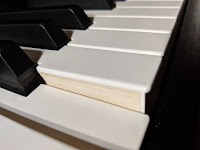
sound and pedaling response definitely take a close 2nd place in things to be concerned about when shopping for a new digital piano and people do want the best piano sound they can get for their price range. But key action realism and authenticity (movement & response of the keys) is the one big thing a piano shopper should be concerned about.
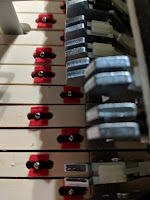
fingers. These keys are not just partially made out of wood or just have wooden sides to the keys like other digital piano brands, but have 100% wooden keys and you can even feel the actual wood as you depress a black key and run your fingers along the sides of the white keys when you are playing…it’s a very organic experience that you would normally only get on real acoustic pianos when you are playing them.
So the biggest selling point in the CA49 in my opinion is the key action and how good it feels and responds. The keys move quietly, smoothly, with what I would call a “medium light” weight to the keys in terms of static down-weight and up-weight which is the amount of force it takes for your fingers to press down the

keys from a resting position and then have those keys come up and press back up against your fingers.
I normally don’t talk about key actions in my reviews quite this much but the CA49 key action is surprisingly realistic and far outclasses anything else in this price range. Beyond the wooden keys, key weight, movement, let-off function, and installation process is the fact that this Grand-Feel Compact key action has 3 electronic key sensors under each key. Generally when it comes to key actions in digital pianos, that more sensors there are then the better the piano can sense your key movement and key travel at any given time while you play.
Another key action feature worth mentioning in more detail is the simulated synthetic matte finish ebony and ivory key tops that are on the keys. This proprietary material that Kawai uses on their keys not only gives the the keys a more classy appearance and cuts down on the glare that plastic keys can sometimes give off, but this synthetic material feel smooth and organic making you believe that your fingers are touching the
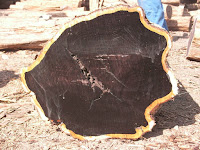
“real thing” when they are really not. In decades past, acoustic pianos had real ivory and real ebony on their key-tops for better finger traction, better absorption of sweat from the fingers, and smoother finger movement. However, ivory and ebony are organic materials from elephants and trees.
When it comes to key actions in this price range or any price range, it’s somewhat of a balancing act for these piano companies to try to create a key action that plays really good but at the same time is quiet when the keys are moving up & down. In a real acoustic piano piano those key actions are generally fairly noisy when moving up and down because there are a lot of mechanical parts moving around and making noise. The reason
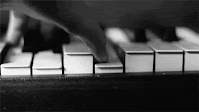
most people are not bothered by that noise or don’t hear the noise is because acoustic pianos are always so loud. There is no volume control on a real acoustic pianos so they are either loud or louder…that’s how I describe it because I play them, own them, and have been around them all my life.

people is a really good thing.
 With regard to piano sound authenticity, the Kawai CA49 has a 192-note polyphony stereo piano sound chip (which is more than enough piano processing power even when layering another sound)) which offers 2 distinct piano sampled recordings from 2 completely different Kawai acoustic grand pianos, one being more mellow and the other being more resonate and metallic with a fuller sound. There are also other acoustic piano sounds available on this model totaling 8 piano sounds. I do like the tonal dynamics of the main piano sampled recordings which are improved from older Kawai models with wider tone which really allows for good expression on this model because expression not only includes volume changes as you play the keys softer or harder, but the musical expression includes a change of tone from more mellow to becoming brighter and more “alive” as you press the keys harder and harder. So I do like the fact that the Kawai piano sounds allow for noticeably natural piano dynamics and musical expression so that whether you are a student or accomplish piano player, you will appreciate what you can do with the pianos sounds on the CA49.
With regard to piano sound authenticity, the Kawai CA49 has a 192-note polyphony stereo piano sound chip (which is more than enough piano processing power even when layering another sound)) which offers 2 distinct piano sampled recordings from 2 completely different Kawai acoustic grand pianos, one being more mellow and the other being more resonate and metallic with a fuller sound. There are also other acoustic piano sounds available on this model totaling 8 piano sounds. I do like the tonal dynamics of the main piano sampled recordings which are improved from older Kawai models with wider tone which really allows for good expression on this model because expression not only includes volume changes as you play the keys softer or harder, but the musical expression includes a change of tone from more mellow to becoming brighter and more “alive” as you press the keys harder and harder. So I do like the fact that the Kawai piano sounds allow for noticeably natural piano dynamics and musical expression so that whether you are a student or accomplish piano player, you will appreciate what you can do with the pianos sounds on the CA49.
If that weren’t enough as far as the piano sound goes, Kawai also has a proprietary iOS app (iPad etc) for their digital pianos called Piano Remote app which allows the user to access all of the instrument sounds in the piano from the color touch screen of your tablet/phone device as well as modify and edit the different piano sounds on the CA49 in a way that customizes the sound for your ears as opposed to what other people may like.
The modification of the piano sounds in this Piano Remote app is called the Kawai “Virtual Technician.” For instance, if you wanted to change key velocity touch response, you can do this from the app so that you can make the pianosound respond differently if your particular finger touch is hard, or soft, or in-between. Some people do not have much strength in their fingers or maybe they pound on the keys with their fingers hard and are not subtle enough.
When it comes to shopping for a new furniture cabinet digital piano, one of the things that people sometimes overlook is the 3 pedals attached to the front bottom of the piano. What I mean by “overlook” is that many people just think pedals are pretty much all the same on various digital pianos. That’s like saying the piano key action is the same or the piano sound is pretty much the same among many different digital pianos. Well nothing could be further from the truth when it comes to pedals and what they do and how they feel. The 3 pedals include (from right to left) damper/sustain, sostenuto, and soft. The soft pedal does what its

name suggests and that is when you are holding down that pedal, what ever note or notes you are playing will be heard at a softer volume.
The CA49 does a great job with all three pedals and I was very impressed with the responsiveness of the pedals, especially the sustain-decay time of the piano notes when using the sustain pedal. In other words, the longer it takes for the piano sound to fade out when holding down the pedal while playing a note or notes, the better and more realistic the piano sound will be…like that of a real acoustic piano. The CA49 had long sustain-decay times across the keys in the lower octave range to the upper octave range. Beyond that, the damper/sustain pedal also triggered “damper resonance” which means that in a real piano when you hold the
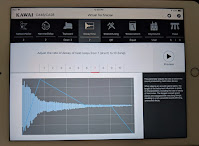
right side damper pedal down then the strings can create more natural resonances giving you a very organic natural reverberation which is especially noticeable in the upper octaves of the keyboard.

supposed to and responded like I would expect on a real acoustic piano. The physical weight and resistance of all 3 pedals was very good and had a natural grand piano pedal feel to it with a firmer amount of weight so that when you pushed down the pedals it did not feel like those light-weight keyboard type pedals or lightweight toy-like pedals I have felt on other digital pianos. Not only that, but the pedals were fairly quiet when pressing down on them or when the pedals were coming back up.
As far as the other non-acoustic piano instrument sounds go, there are 11 of them including some impressive electric pianos, choirs, organs, strings, synthesizers, harpsichords, etc which you can access off the control panel by pushing the sound-function button and pressing a specific white or black key on the piano. Those sounds are very good and much better than on other brands of digital pianos I have played in this price range. I also like the fact that those sounds not only sound great by themselves, but they also make the acoustic piano tones sound even fuller when you layer any of them together with an acoustic piano sound or even layer 2 non-acoustic piano sounds together.
 There is another way you can find the instrument sounds in the CA49, especially for the “vision impaired.” Kawai gives you two very innovative ways to more easily identify the sound and function you are using as well as to control them more intuitively including layering two sounds together at the same time. One of those sound identification functions is called Vocal Assist. The way this feature works is that when you touch and hold the sound select button and then touch specific keys on the keyboard, there is a voice in the piano that verbally tells you what function or sound you are getting when you press that key. For instance, when you press the 1st white key in the bass section, you are triggering the SK concert grand piano sound.
There is another way you can find the instrument sounds in the CA49, especially for the “vision impaired.” Kawai gives you two very innovative ways to more easily identify the sound and function you are using as well as to control them more intuitively including layering two sounds together at the same time. One of those sound identification functions is called Vocal Assist. The way this feature works is that when you touch and hold the sound select button and then touch specific keys on the keyboard, there is a voice in the piano that verbally tells you what function or sound you are getting when you press that key. For instance, when you press the 1st white key in the bass section, you are triggering the SK concert grand piano sound.
When you want to connect your external device (such as an iPad) to the CA49 and you want to use interactive MIDI controllable apps such as Sound Museum or Virtual Technician, the Kawai CA49 has a Bluetooth wireless feature that allows you to connect your device to the CA49 without the need of a cable. This pretty cool because the connectivity is nearly instant and then you can put your iPad (or iPhone) wherever you want to and have control over the piano wirelessly and anywhere in the room you want to. Also there are many 3rd party music/piano educational apps for learning how to play the piano in the comfort of your own home and those apps can also be connected by Bluetooth wireless MIDI because the CA49 has that feature.
The Kawai CA49 has a number of interesting and useful digital features such as layering/mixing 2 different instrument sounds together which can make the over sound experience more dramatic and musically exciting. It has a four-hand mode where two people can practice the same song at the same time playing the same notes by converting the keyboard electronically to 2 separate 44-note keyboards that act independent of one another. There is a digital metronome which is fully adjustable for tempo and time signature which is great for students and learning to stay “on the beat.” There are also functions in this piano that allow you to adjust the overall tonal quality of the sound which include reverb (adding a variety of reverberation to the sound), brilliance which allows for brightening up the sound or reducing brightness so the sound is more mellow, and 4 types of touch sensitivity control.
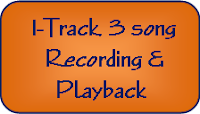 You can also record songs on the CA49 using the piano control panel and then playback to listen to how you are doing. The recording feature has just one track recording for both hands instead of 2-tracks so that you could record and playback right and left hand independently as you can on other digital pianos. I would have preferred a 2-track recorder/playback system but for many people a 1-track recorder playback feature can be enough. You can also save up to 3 recordings in memory so you can retrieve
You can also record songs on the CA49 using the piano control panel and then playback to listen to how you are doing. The recording feature has just one track recording for both hands instead of 2-tracks so that you could record and playback right and left hand independently as you can on other digital pianos. I would have preferred a 2-track recorder/playback system but for many people a 1-track recorder playback feature can be enough. You can also save up to 3 recordings in memory so you can retrieve
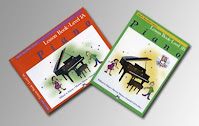
and playback those recorded songs whenever you choose to do that. If you want to record more songs then you have to erase what was previously in the recorder and then you can record new songs.
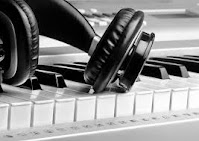 A few other useful functions in this model would include a transpose feature allowing you to digitally change the key you are in without you having to learn the song in a new key which you may not be able to do based on your musical ability. Transpose is a great feature in allowing the player to modulate the song up or down (churches do that a lot with their music) and it’s also very useful if you or someone is singing along with you and you need to get the song into your vocal range so then you use the transpose feature to do that and it works well for that purpose.
A few other useful functions in this model would include a transpose feature allowing you to digitally change the key you are in without you having to learn the song in a new key which you may not be able to do based on your musical ability. Transpose is a great feature in allowing the player to modulate the song up or down (churches do that a lot with their music) and it’s also very useful if you or someone is singing along with you and you need to get the song into your vocal range so then you use the transpose feature to do that and it works well for that purpose.
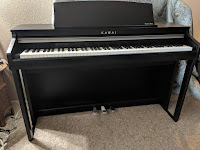 It’s definitely worth mentioning that for a number of years, on certain digital piano models, Kawai has included a special proprietary fun educational learning system for beginner students and for people who may play the piano but just want to have some added musical enjoyment. This unique system is called Concert Magic it is designed to let you play along with familiar songs that are built into the CA49, but in a way that allows for extensive rhythm and timing training while not having to play the “correct notes” for the songs to sound good. In the basic learning mode of the Concert Magic system, the student, even at very young ages, can play any key and get the correct left hand chord and right hand note of the chosen song…all by pressing one note at a time. The point is to press the key(s) in a steady constant beat beat without having to worry about playing the right note or even at the right time.
It’s definitely worth mentioning that for a number of years, on certain digital piano models, Kawai has included a special proprietary fun educational learning system for beginner students and for people who may play the piano but just want to have some added musical enjoyment. This unique system is called Concert Magic it is designed to let you play along with familiar songs that are built into the CA49, but in a way that allows for extensive rhythm and timing training while not having to play the “correct notes” for the songs to sound good. In the basic learning mode of the Concert Magic system, the student, even at very young ages, can play any key and get the correct left hand chord and right hand note of the chosen song…all by pressing one note at a time. The point is to press the key(s) in a steady constant beat beat without having to worry about playing the right note or even at the right time.
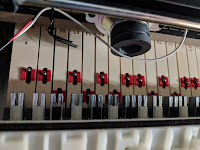 We’re now getting into the “home stretch” so I will say a few things about the internal speaker system of the CA49. There a 4 speakers in this model with 2 speakers measuring 5.12″ each at the bottom of the piano (1 on each side) pointing down and forward, and there are also 2 smaller “tweeter speakers” measuring 2″ each pointing forward from inside the piano above the keys one on each side of the piano which allows for better clarity in the higher frequency tones. The amplification system is now produced by the Onkyo audio company of Japan which is famous for producing some of the world’s best home audio systems. So rather than use the previous Kawai made internal audio system that used to be in the previous models, the CA49 has the all new and improved Onkyo audio system which includes 40 watts total stereo power (2x20w) which puts out plenty of volume for most rooms.
We’re now getting into the “home stretch” so I will say a few things about the internal speaker system of the CA49. There a 4 speakers in this model with 2 speakers measuring 5.12″ each at the bottom of the piano (1 on each side) pointing down and forward, and there are also 2 smaller “tweeter speakers” measuring 2″ each pointing forward from inside the piano above the keys one on each side of the piano which allows for better clarity in the higher frequency tones. The amplification system is now produced by the Onkyo audio company of Japan which is famous for producing some of the world’s best home audio systems. So rather than use the previous Kawai made internal audio system that used to be in the previous models, the CA49 has the all new and improved Onkyo audio system which includes 40 watts total stereo power (2x20w) which puts out plenty of volume for most rooms.
With regard to external and/or internal connectivity, the CA48 has 2 MIDI ports which supports traditional MIDI plugs and those MIDI ports can also be adapted to an external Bluetooth Audio adapter so that the piano could receive Bluetooth wireless audio through its speaker system. The CA49 does not have audio outputs or inputs but it does have a USB output to host so that you can plug in your computer or device to access programs or apps. However, with the on-board Bluetooth wireless MIDI protocol, you don’t need a cable connected to your device and piano to access MIDI responsive apps and programs so this makes it very quick & easy to connect your iPad (as an example) to the piano so that you can instantly use the Kawai Piano Remote app as I discussed earlier.
When you add it all up for its relatively low price, the CA49 in dark satin rosewood, satin black finish with simulated black wood-grain, and also satin white are real winners in my opinion.
Although there are always a few short-comings in most any new digital piano out there, this impressive model has enough great features and functions to make a digital piano shopper say “yes” I want that one! Measuring in at just 53″x18″x33″ and weighing only 125lbs, this model can easily fit into a lot of places.It looks very attractive with a nice cabinet design along with front support legs, a privacy panel below the keyboard, a slide-out key cover, an adjustable music rack with lots of space to put your sheet music or music books, 3 attractive chrome pedals on the black cabinet and brass pedals on the rosewood cabinet, and a comfortable padded matching bench that has music storage inside, in my opinion the new CA49 offers the type of features, functions, cabinet design, and price that most people want who are looking to mainly purchase a digital piano that focuses on the piano playing experience rather than offering all kinds of bells & whistles such as drums, brass, woodwinds, auto-accompaniment, multi-track recording, etc that a lot of people just don’t want or need.
The CA49 is part of the Concert Artist series of digital pianos for Kawai which is a more prestigious series of digital pianos with that great proprietary longer wood-key key action experience that so many people are looking for in this price range. None of the other digital piano companies have all-wood white keys near this lower price range. Although many plastic key actions can be enjoyable to play and I have played them all, the CA49 is “the next level of realism” in that way.
Given the fact that the Kawai digital pianos are known for their overall reliability and durability over time, this piano still comes with a long factory warranty of 5 year parts & 5 years labor with in-home service. This warranty is a fairly long time in my opinion and covers any factory defect that occurs in the piano, so this 5 years of factory warranty time should give most people peace of mind when it comes to the piano being backed up by a reputable company such as Kawai.
If you want more info on new digital pianos and LOWER PRICES than internet discounts, please email me at tim@azpianowholesale.com or call direct at 602-571-1864.








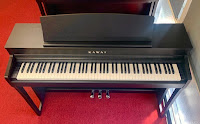
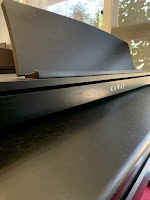
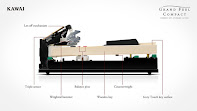

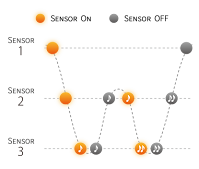


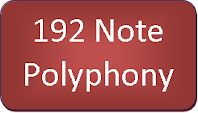
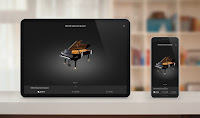

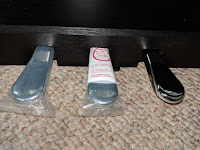
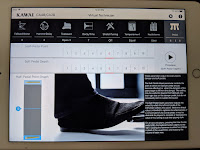
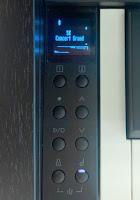
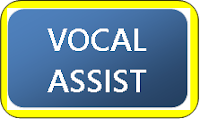
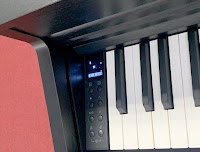
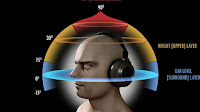
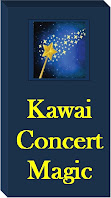
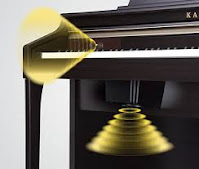
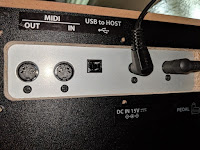
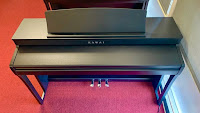
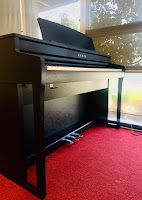
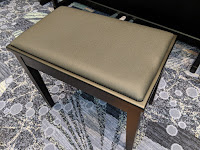











Fantastic reviews! I just devoured 10 of them. Based on your reviews, I've narrowed down my choices to two: the Kawai CA48 and the Korg G1 Air. I will be purchasing one of these for my 2 boys who are taking lessons at a music conservatory. I would prefer an acoustic piano (as would their instructors), but in terms of price and space, a digital piano makes more sense right now. We don't need any bells or whistles, just real key feel and sound. I hate to ask a kind of loaded question like this, but given the choice for 2 budding pianists, which would you suggest? Any thoughts will be greatly appreciated! Thanks much!!
Hi Tim, may I know in your opinion, which is better. Kawai CA48 or the Yamaha Clavinova CLP 635?
Dear Tim,
can you please give me an advice.
What should I choose between clp-645 and kawai ca48?
After you review I am not quite sure with kawai because of its 40 watts sound. Comparing to 100 watts of yamaha.
How does the key action noise compare to the kawaii kdp110? I have the kdp110 and find the keys to be noisy when you press down and release them, especially when the keys rebound against the top of the keybed
I am in the same situation. Can you share which one did you choose and why?